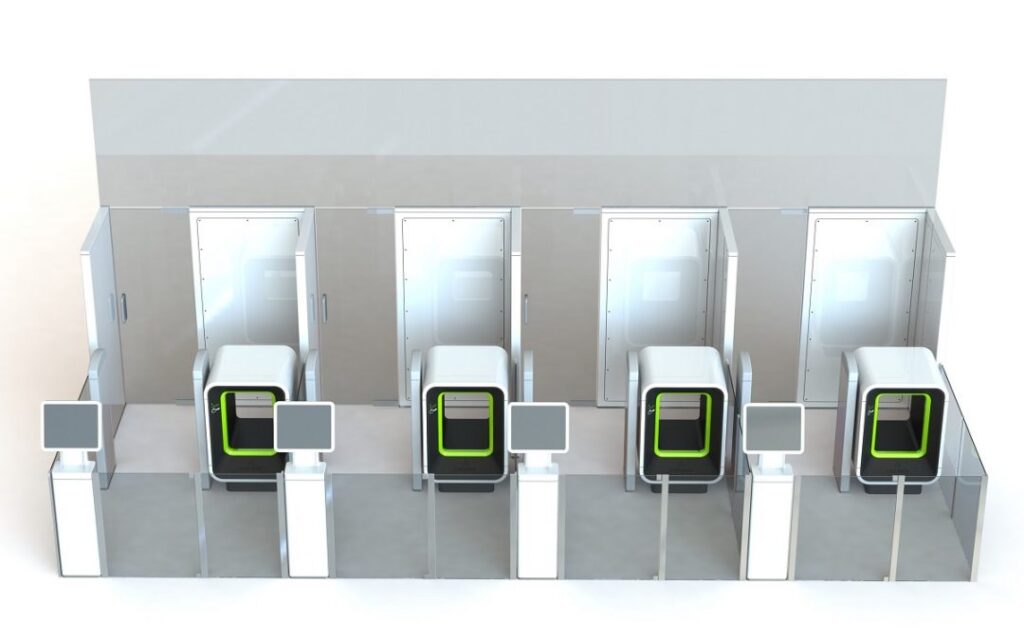Micro-X and its US subsidiary is working with the US government to develop a passenger self-screening airport checkpoint portal, which will combine the traditional, sequential airport checkpoint processes into a consolidated module.
“We are delighted to be working with the Department of Homeland Security (DHS) to develop this new security system that will both make air travel a more enjoyable and safer experience,” said Peter Rowland, Managing Director of Micro-X.
The Airport Security Portal will combine existing self-service technologies such as automated document scanning and validation, photometric identity checking, and millimetre-wave body scanning with a miniature, self-service x-ray scanner for carry-on bags and personal property.
The project is made possible by carbon nanotube emitter technology invented and developed by Micro-X that dramatically reduces the size of x-ray tubes and imaging devices.
Conventional three-dimensional x-ray baggage scanners are far too large to make a self-service security portal practical.
Micro-X signed two contracts with the DHS last week that establish it as lead contractor in a team of innovative companies from around the world to develop the security portal.
They include Melbourne-based Elenium Automation, a leader in many elements of airport passenger workflow automation, a European leader in millimetre-wave on-person screening technology which enables high-resolution scanning of passengers in real-time as they move, and Sandia National Labs in Albuquerque, a US Government Laboratory which has developed an Open Architecture integrated airport checkpoint management system based on conventional screening technology.
Micro-X will also be supported by Monash University Design team and The Transportation Safety Administration (TSA) of the US, which will guide the security and safety requirements of the system.
The project will be managed in Seattle within a newly created, independent, Micro-X Business Unit led by General Manager Dr Brian Gonzales.
“These DHS contracts are transformational for Micro-X and represents the culmination of many years of amazing work by Dr Gonzales and the team, in developing new concepts for improving x-ray imaging for aviation security,” said Rowland.
“It is also a tribute to Micro-X’s customer-centric design philosophy to be selected for this major new systems design and integration project.
“Every traveller has got airport security horror stories to tell and it is exciting that this innovative international team, led by Micro-X, is now positioned to improve future air travel for all stakeholders.”
